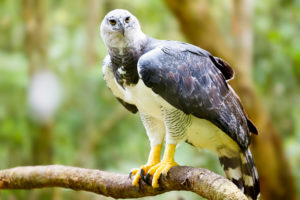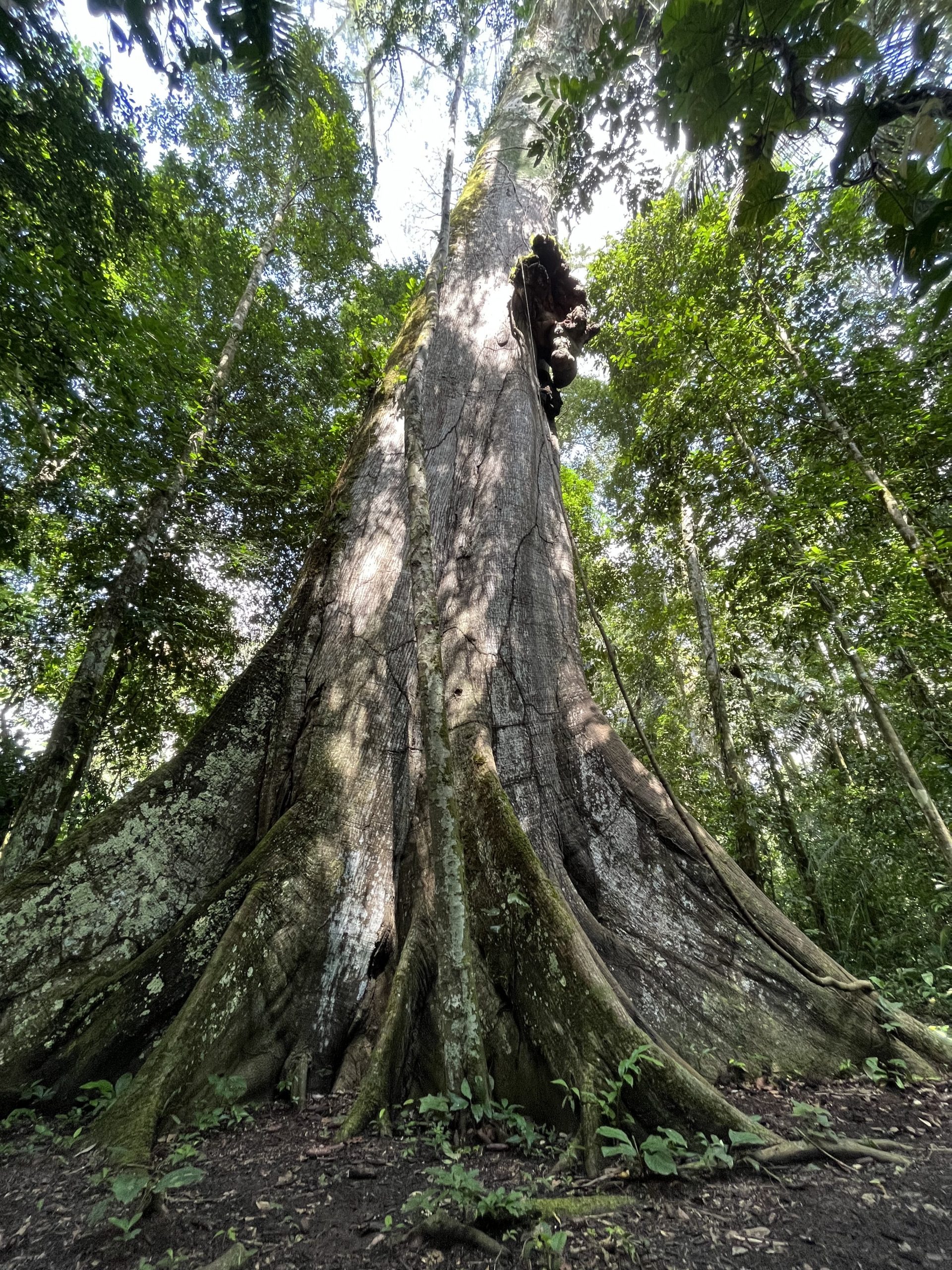In the forests of the Infierno project in Peru, there’s a tree that the indigenous communities call ‘the Mother of the Jungle’. The tree is a Ceiba tree and is over 400 years old. The tree is a spiritual landmark for the indigenous Infierno community of Ese Eja people who live here in the forest and work to conserve almost 8,000 hectares of Amazon jungle as part of a REDD+ project generating carbon credits.
Situated in dense old-growth forest near the Tambopata River, the Mother of the Jungle is over 50 meters (150 feet) tall and its root system is so extensive it would take at least 50 people holding hands to encircle it. This Ceiba tree is a sight to behold, rising far above the canopy and symbolising the ancient landscape it calls home.
 This Ceiba tree is spiritual to the Infierno for many reasons, one of them being the home it provides to a myriad of different key species, such as the Harpy Eagle, which is threatened in Peru. Harpy Eagles live in the Ceiba’s upper canopy joining other birds like bats who occupy the many powerful branches splaying across the forest sky. Other animals use the tree’s massive branches as forest highways, while snakes and frogs find a home in its elaborate root system. The tree is also sacred as a source of medicines and other health remedies. Its seeds, leaves, bark and sap have been used for generations to treat anything from fever to dysentery.
This Ceiba tree is spiritual to the Infierno for many reasons, one of them being the home it provides to a myriad of different key species, such as the Harpy Eagle, which is threatened in Peru. Harpy Eagles live in the Ceiba’s upper canopy joining other birds like bats who occupy the many powerful branches splaying across the forest sky. Other animals use the tree’s massive branches as forest highways, while snakes and frogs find a home in its elaborate root system. The tree is also sacred as a source of medicines and other health remedies. Its seeds, leaves, bark and sap have been used for generations to treat anything from fever to dysentery.
The Ceiba tree has softwood, and grows incredibly fast – in some cases up to 4 metres (13 feet) a year. The fast-growing nature of these trees mean they are often the tallest in the forest, enabling their seeds to be blown to long distances. With as many as 4,000 fruits at any given time, each with 200 hundred seeds, Ceiba trees have no problem growing here in the Amazon of Peru.
But this doesn’t mean that Ceiba’s are not at risk. These trees, like many others, are threatened by illegal logging operations deep in the jungle. A key part of the climate finance used by the Infierno REDD+ project goes towards forest monitoring and surveillance, which involves forest patrols, staff training, checkpoint infrastructure and the purchase of key equipment like GPS and drones.
With the COVID-19 pandemic came a heightened risk of deforestation in the Amazon as many economic opportunities were halted and communities looked for other sources of revenue. In 2021, the project’s surveillance programme was further strengthened with additional supplies and support. This programme is now continuing to successfully empower the Infierno to protect their forest from illegal invasion and manage forest resources in a sustainable way that ensures healthy and resilient revenue streams for years to come.
As a result of this work, the Mother of the Jungle only keeps on growing…
